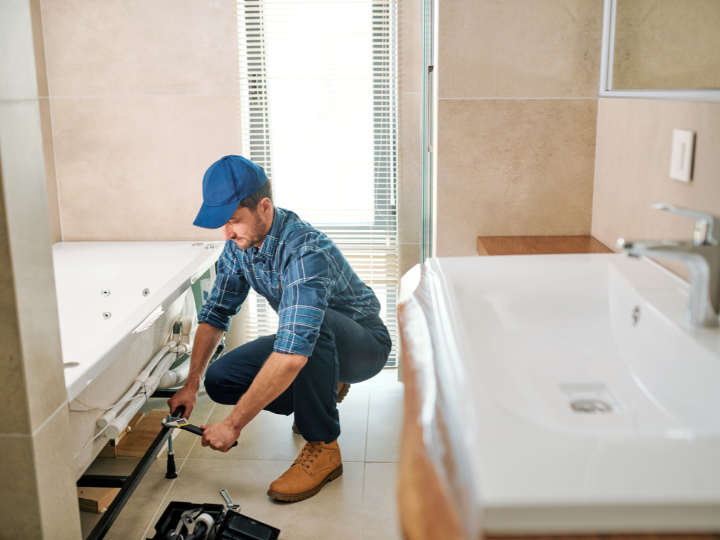Planning a bathroom upgrade but wondering how long the process will actually take? If you’re considering a simple bathroom renovation, you’re probably hoping for something efficient, cost-effective and relatively hassle-free. While it’s true that a simple makeover doesn’t take as long as a full-scale renovation, there’s still a timeline involved—and knowing what to expect helps you avoid delays, set realistic expectations, and stay on top of your schedule.
In this article, we break down the general timeline of a simple bathroom renovation, explain what factors can impact the duration, and provide tips to help keep things moving smoothly.
What Counts as a Simple Bathroom Renovation?
Before diving into the timeframes, it’s important to define what a simple bathroom renovation actually means. Generally, it refers to cosmetic or non-structural changes such as:
-
Replacing old tiles with new ones
-
Installing new tapware or a vanity
-
Updating the shower screen or toilet
-
Refreshing paint or lighting fixtures
These upgrades typically don’t require complex plumbing changes, structural alterations, or council approvals—making them quicker and more affordable than full bathroom remodels.
Typical Timeline: How Long Does It Take?
While every project is different, a simple bathroom renovation in Australia typically takes 1 to 3 weeks, depending on the scope and complexity of the work.
Here’s a rough breakdown of the timeline:
1. Planning and Design (1–2 weeks prior to renovation)
Although not part of the physical build, this stage is crucial. Selecting materials, confirming the design, and hiring a contractor should happen well before any work begins. Rushing this stage can cause major hold-ups later.
2. Demolition and Preparation (1–2 days)
Once the renovation begins, tradespeople will remove old fittings, tiles, and fixtures. If there’s no structural work involved, this part is usually quick and mess-free.
3. Plumbing and Electrical Work (1–3 days)
If minor plumbing or electrical adjustments are needed—such as repositioning a tap or upgrading light fixtures—licensed professionals will take care of it during this window.
4. Waterproofing (1–2 days + curing time)
Australian building codes require waterproofing in wet areas like showers and around bathtubs. Once applied, the waterproof membrane must cure for 24–48 hours before tiling begins.
5. Tiling and Flooring (2–4 days)
Tiling is often the most time-consuming part of a simple bathroom renovation. It includes wall and floor tiles and can take several days depending on the size of the bathroom and the type of tiles chosen.
6. Fixtures and Fittings Installation (1–2 days)
After the tiles are in place, trades will return to install the toilet, vanity, mirrors, towel rails, and other accessories. This is when the bathroom really starts to come together.
7. Final Touches and Cleanup (1 day)
Grouting, silicone sealing, touch-up painting, and a thorough clean finish the project. At this stage, a final inspection ensures everything works perfectly.
What Factors Can Impact the Timeline?
While simple bathroom renovations are meant to be quick, several factors can slow things down:
• Availability of Trades
Good tradies are often booked out weeks in advance. Schedule your project well ahead of time and confirm all trades are locked in before starting.
• Product Delays
Ordering tiles, fixtures, or vanities from overseas or custom suppliers may lead to longer wait times. Always check lead times and availability before committing to a timeline.
• Unexpected Issues
Sometimes what looks like a simple job reveals underlying issues—like water damage or outdated plumbing—that need to be fixed. While frustrating, addressing these issues is necessary for safety and longevity.
• Poor Planning
Starting a renovation without a solid plan is one of the top reasons for delays. Last-minute changes, missing materials, or unclear instructions can derail a project quickly.
How to Keep Your Renovation on Schedule
If you want your simple bathroom renovation to run smoothly, follow these key tips:
Finalise Your Design Early
Lock in all your selections—including tiles, tapware, and fittings—before demolition starts.
Use Reputable Trades
Hire licensed, experienced professionals with a track record of punctuality and quality work.
Order Materials Ahead
Ensure all products and materials are on-site or ready for delivery before work begins.
Stick to the Plan
Avoid mid-project changes unless absolutely necessary. Even small changes can lead to big delays.
Be Available for Decisions
Make yourself accessible during the renovation. Quick responses can prevent unnecessary downtime and ensure that your tradespeople have the information they need to move forward efficiently. Whether it’s approving a material choice or confirming a fixture placement, timely communication can be the difference between a smooth, on-schedule job and one that drags on unnecessarily.
So, how long does a simple bathroom renovation take? If everything goes to plan, you can typically expect the project to wrap up in about two to three weeks. This timeline includes demolition, plumbing and electrical adjustments, waterproofing, tiling, and final fixture installation. While that might seem quick for such a significant transformation, the key to keeping things on track lies in the preparation.
A simple bathroom renovation doesn’t necessarily mean rushed or basic—it simply means you’re focusing on functional upgrades and essential changes rather than complete overhauls. However, even a straightforward update requires thoughtful planning and careful coordination of all the moving parts involved.
To get the most out of your renovation timeframe, start by locking in your design and material choices early. Indecision is one of the biggest causes of delays. Finalising tiles, tapware, vanities, lighting, and colour schemes before demolition begins allows your team to work without interruption. It also reduces the chances of having to rework plans or adjust installations partway through.
It’s also wise to work with licensed, experienced professionals who understand local building codes and can anticipate any potential hurdles. This includes your builder, plumber, electrician, and waterproofing specialist. Each one plays a vital role in the smooth execution of your simple bathroom renovation, and having a team that communicates well can make all the difference.
